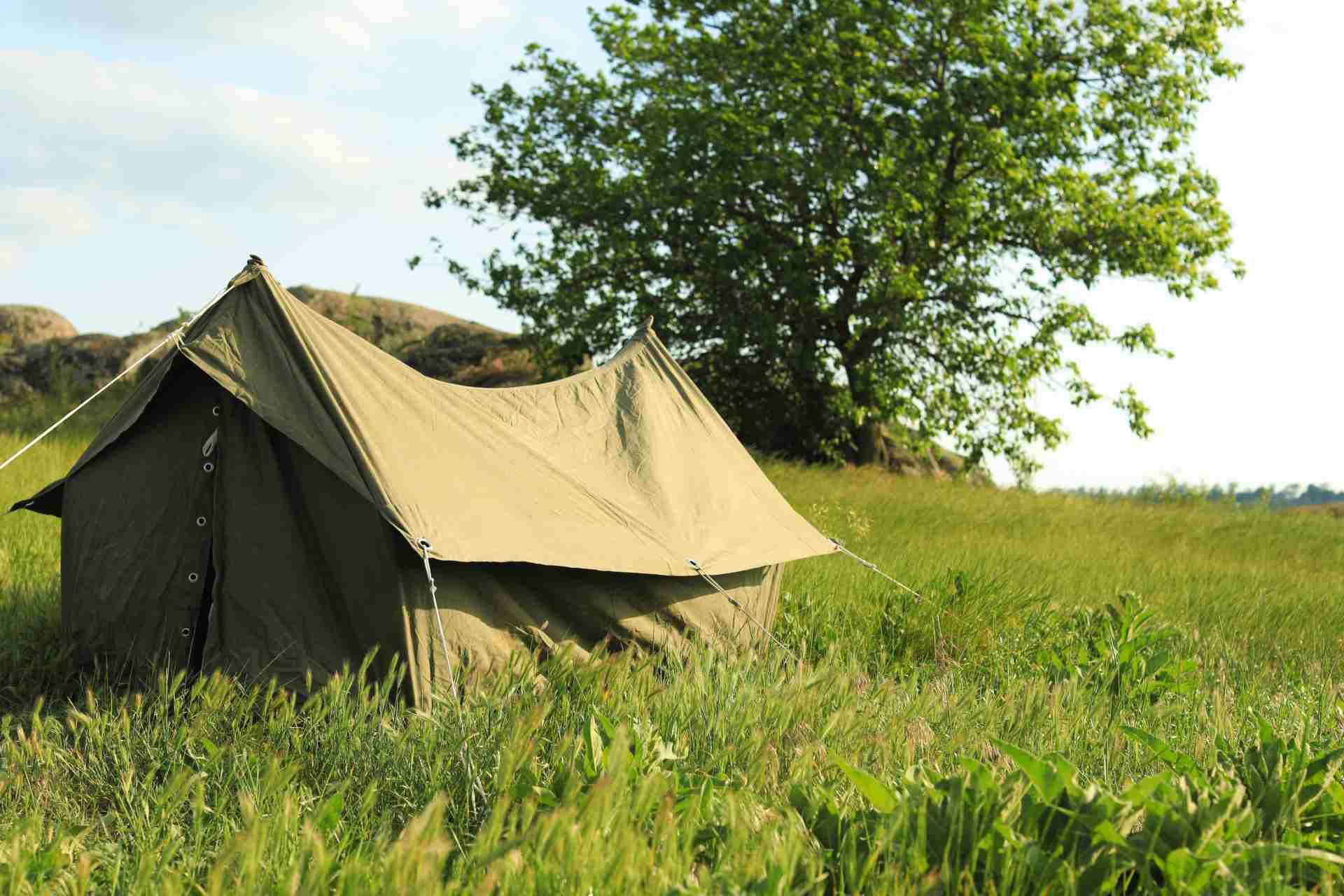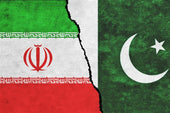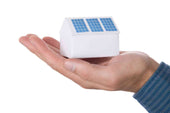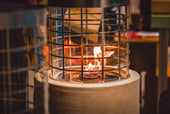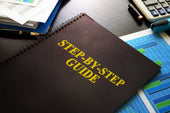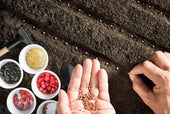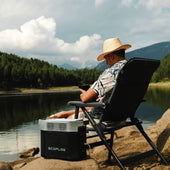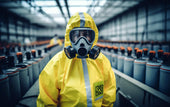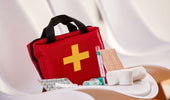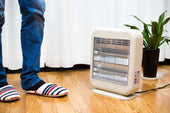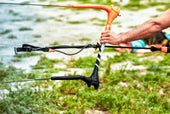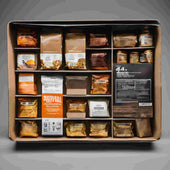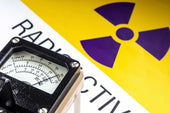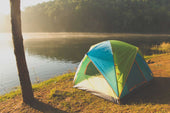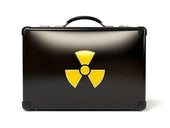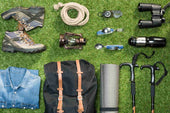You'll likely experience less-than-perfect weather when camping, hunting, or fishing on the trail, especially in winter and the fall. You'll get wet and cold if you're not prepared and want to be anywhere but wet and freezing. Military brilliance comes to the rescue yet again.
Military and survival ponchos are an excellent option for keeping your belongings in your bag and yourself dry.
Survival ponchos are intended for emergencies. They must be extremely lightweight and packable, fitting into your bag as little as possible.
On the other hand, military ponchos must meet strict military standards for quality and effectiveness.
Undoubtedly, getting a real, heavy-duty poncho that is truly used in the army is complex for most individuals. Do not despair, though, since you can still get a military-style poncho, arguably the most accurate design.
Military-style ponchos are durable textiles supporting outdoor activities during bad weather. They are typically more robust and dependable than survival ponchos despite being heavier.
Why is The Military Poncho Army So Popular?
Nowadays, ponchos are rather popular.
A rectangular fabric used as a blanket is called a poncho liner or woobie. It was initially available in a woodland camo pattern but now comes in other varieties and is often constructed of ripstop or quilted nylon or other strong fabrics.
Because of their adaptability, poncho liners are utilized by the military, survivalists, and shooters, particularly in the great outdoors. Ask every veteran or active person what their favorite field equipment is, and bet that at least 95% will say the woobie!

History
Over a century has passed since ponchos first appeared, giving them a long and colorful history. Initially created as military gear, Ponchos have transformed into chic rain gear well-liked by fashion and outdoor lovers. Below is a timeline of their development, from their military beginnings to their present position as a fashion staple.
Early Origins
According to historical records, ponchos have been used in South America since pre-Columbian times. The native inhabitants of the Andes utilized woven ponchos to keep themselves dry and warm.
Military Use
During World War II, soldiers used ponchos to shield themselves from the rain and cold, and they quickly became quite popular. The oversized, heavy rain ponchos the US military provided were made of canvas or rubberized cloth. However, they did an excellent job keeping soldiers warm and dry during battle.
Post-War Evolution
The military continued to create and utilize rain ponchos after World War II, although their construction and materials changed. Nylon or PVC-based lightweight and portable rain ponchos that were easier to carry and offered superior rain protection were introduced.
Demand for Outdoor Activities
Ponchos gained popularity among outdoor enthusiasts, especially campers and hikers, in the 1960s. Thanks to its lightweight, small size, and price, the poncho was a sensible choice for outdoor activities, and it quickly established itself as a mainstay in every hiker's backpack.
Fashionable Rainwear
Ponchos have also evolved into chic rain gear in recent years. Designers have refined the basic rain poncho and design into fashionable rainwear well-liked by fashion fans. Today, rain ponchos come in various colors, designs, and materials, from classic vinyl to modern breathable fibers.
How Warm is A Poncho Liner?
Now you understand that poncho liners are great military equipment for keeping soldiers warm in cold weather. When used as a blanket by military troops sent on a mission, they can maintain a reasonable body temperature. Poncho liners can be very warm and often comprise nylon and polyester.
Military troops frequently forego sleeping bags for poncho liners when camping or on deployments in hotter climates. Poncho liners are lighter and easier to carry than sleeping bags but offer less warmth overall. They can also be used as a windbreaker or ground cloth.
Creative Uses of Military Ponchos
One of the most useful items you can have on you is a poncho. It has several uses:

-
It shields you from the rain and is typically big enough to cover you and your pack, keeping your belongings dry.
-
A roof for a shelter: Since the typical lean-to or survival shelter is not very waterproof, you can dry it by covering the roof structure with a poncho. Just watch out for sticks or thorns that don't damage the plastic.
-
It can be set up as a sun shelter to give you shade in hot regions.
-
A rain catcher: Place the poncho in a hole or other low area to collect rainwater.
-
Ground cloth: A poncho can shield you from the soggy ground beneath a tent or shelter. Living in a cold, wet climate can keep you warm.
-
Windbreak: Even though a poncho without a lining is not very insulating, you will stay warmer if you wrap up in it in windy conditions; this will assist in preventing wind chill.
-
Water carrier: To build a water bucket, you can put your poncho inside a box or other container. If folded into multiple layers, it will function independently. Take caution not to damage the poncho.
-
Game butchering: If you have any flesh to butcher, the poncho provides a spotless surface to spread the meat. Simply avoid cutting the poncho.
At home:
Many troops have acknowledged spending cash to bring their Woobie home after a deployment. Here are some examples of how they use their Woobies.
-
A dog bed. Due to its silky texture and capacity to keep heat in, a Woobie blanket is a K9 favorite. Many veterans claim to have given their Woobie to their dog or to have at least bought a new one for them.
-
A Woobie is a survival kit item. Given its previously mentioned uses, is there any justification for every car not to have one in its emergency kit?
-
Hooded woobie. You might wonder what a Woobie hoodie is. The description is accurate. A hoodie constructed from Woobie fabric. Actually, for years, when troops returned home, their Woobies were transformed into outerwear.
-
It's the most beloved blanket. In truth, most soldiers who keep their Woobie use it like any other cherished blanket. To sit on for outdoor activities like concerts or little league games or for picnics in the backyard. On the sofa.
The Perfect Military Poncho For Sale
Due to the increasing number of imitation military ponchos on the market, purchasing one can be difficult. Making the appropriate decision is crucial since a heavy-duty military poncho can make all the difference in life-or-death circumstances. Before making a choice, think about the following factors.
Material
Other materials consist of:
Nylon: One of the strongest fabrics is nylon, but rip-stop nylon is even more durable, flexible, and abrasion-resistant. Additionally, this fabric is mold and mildew-resistant. It includes a waterproof coating that lets the user stay dry in bad weather. However, the waterproof characteristics reduce the breathability of PU-coated nylon.
Polyester: More than any other kind of cloth, military ponchos are most frequently made of this material. Polyester can be water-resistant with an extra coating and survives in extremely hot and cold temperatures.
Polyethylene (PE) and Polypropylene (PP): Both polyethylene (PE) and polypropylene (PP) are waterproof materials that work well for military ponchos. Other materials, nevertheless, are more breathable.
Breathable PU Fabric: This material excels for various uses, primarily when the military poncho must fulfill additional tasks. An excellent example of this fabric type with excellent waterproofing qualities is Paratex Dry.
Weight & Size
Water Resistance
Ventilation and Breathability
Color
Other Features
Mirasafety M4 Tactical Military Poncho

The M4 Tactical Military Poncho from MIRA includes everything you need and a few desired items.
To begin with, it provides more than simply rain protection; it has been shown to shield the skin against CBRN (chemical, biological, radiological, and nuclear) dangers that can take the form of gas or liquid.
It weighs just under 1.5 lbs., is lightweight, and has a 15-year shelf life, making it ideal for preppers searching for a resilient military poncho.
Thanks to the three color options, three sizing options, and tear-resistant polyamide material, you can look beautiful in the field and feel fantastic knowing you're protected.
Although it is a costly option, this is unquestionably a wise investment.
Military Poncho: How to Wear and Care Tips

If you're new to the world of military ponchos, here are some suggestions for how to wear them and some maintenance tips. A poncho is simply a rain cape—a cloak that shields you from the elements and keeps you dry.
Military ponchos are designed without arm holes to allow for greater mobility because they are frequently worn by troops while performing crucial duties. The poncho drapes over your arms, and you may secure it with one of the plastic or metal clasps/buttons frequently found around the sides, close to the bottom.
Most military ponchos also feature a drawstring hood; tighten the drawstring if the rain is windy or sideways.
Maintaining the effectiveness of your military poncho will be crucial if you intend to use it as a shelter, tarp, ground cover, or in a muddy location.
Don't wash or dry your poncho in either appliance. This will immediately and permanently damage the fabric and cording of your poncho. Similarly, avoid hot pressing, dry cleaning, and ironing your poncho because they will all have unfavorable effects. Your military poncho should be hand-washed with light soap or detergent in warm water. Any stubborn dirt you observe can be removed with the help of a soft-bristled brush. After that, rinse it quickly and hang it to dry entirely.
It's time for you to enjoy your brand-new, unique military poncho outside. If you treat it right, it will look after you for a long time!

